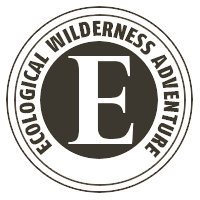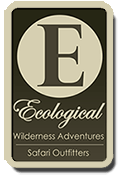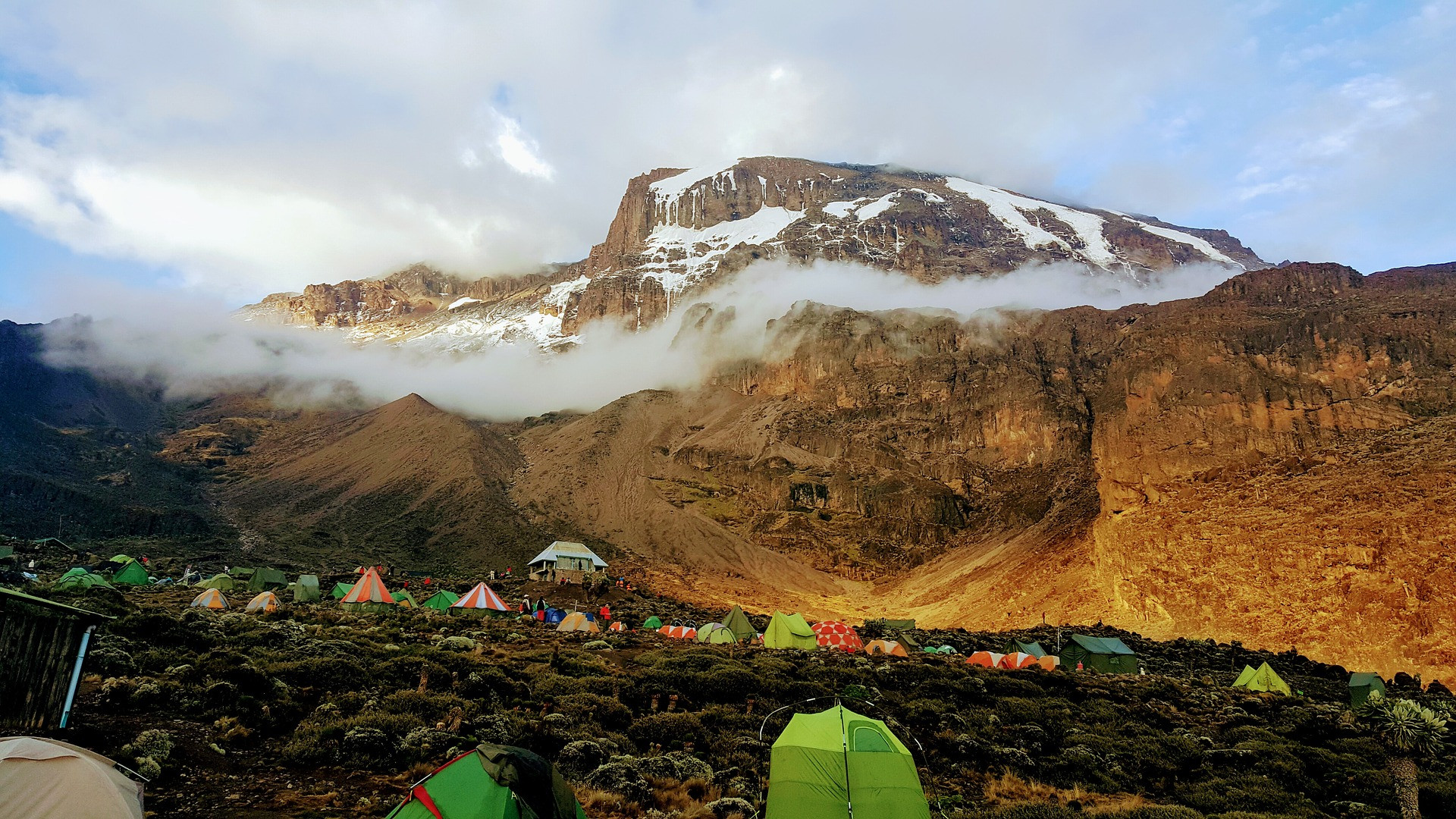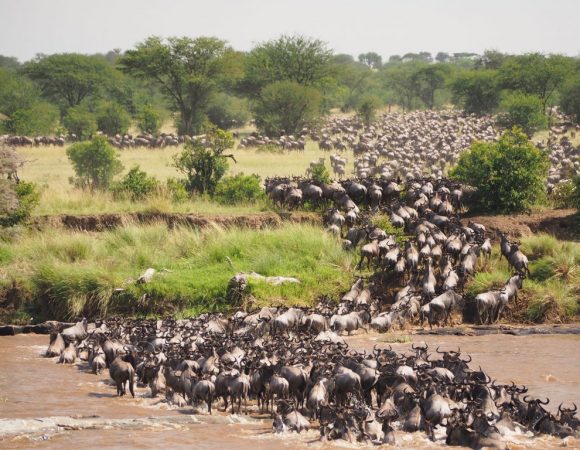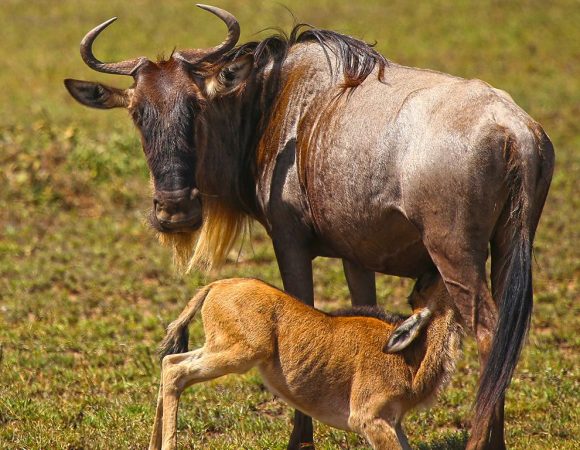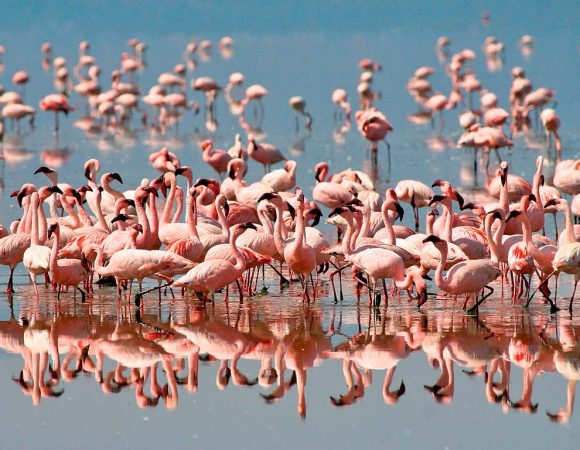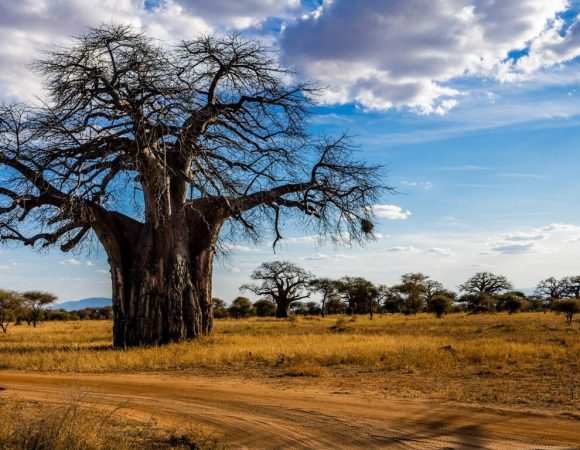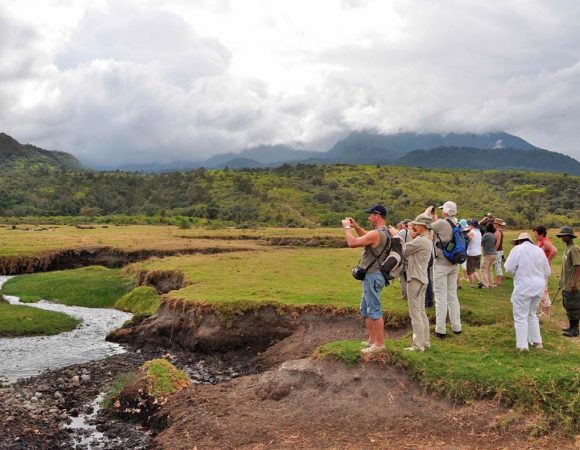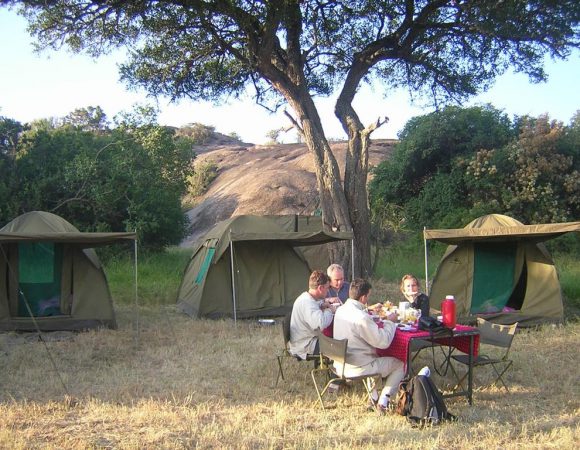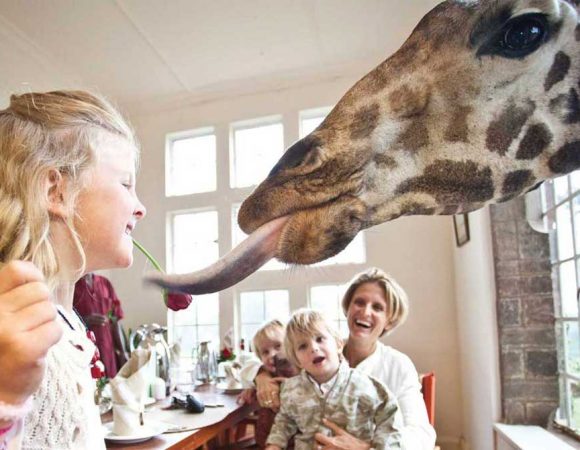- Home
- Mt. Kilimanjaro Climb Tanzania
Mt. Kilimanjaro Climb Tanzania
The Mt. Kilimanjaro Climb is considered a strenuous and physically demanding trip (reaching altitudes exceeding 19,000 ft above sea level). It is imperative that you are fully prepared (both physically and mentally) for this trip and you must ensure you have all the appropriate equipment and clothing, which can greatly affect the overall enjoyment of your tour. You will experienc e equatorial to arctic conditions. The range begins with the warm dry plains with an average temperature of 30C, ascends through a wide belt of wet tropical forest, through zones with generally decreasing temperature and rainfall, to the summit where there is permanent ice and below freezing conditions. The altitude and seasons determine weather conditions.
The fact that for most months of the year there are so few rainy days makes it possible to climb in relatively good conditions all year round. The rainy season is from March to June, with short rains in October and November. Mt. Kilimanjaro has five altitude/climate zones; the lower slopes, forest, heather and moorland, highland desert and the summit. Within each zone there is an association between altitude, rainfall, temperature, plants and animals.
The zones occupy belts of approximately 3,281 ft (1000m) of altitudes each. In general the temperature falls about 1C for every 656 ft (200m) increase in altitude, rainfall also decreases steadily with altitude from the forest upward. Plant life is abundant in areas of high temperature and high rainfall. As you climb you will see that plant life decreases, not because of the height, but because conditions are colder and drier. As animal life is dependant on plants, fewer animals live at high altitude. The lower slopes 2,624 – 5,906 ft (800 – 1800m) were originally scrub, bush and lowland. This has been cultivated and is now used for livestock grazing and local crops. In this cultivated zone you will not see large wild animals. The forest 5,905 – 9,187 ft (1800 – 2800m) is the richest zone on the mountain.
A band of extremely beautiful montane forest encircles the whole of Kilimanjaro, frequently covered in cloud. Protected from the sun by clouds the moisture cannot easily evaporate so there is high humidity, dampness and fog. Although flowers are not plentiful in the forest those seen are often striking. The forest is the home of most of Kilimanjaro’s wild animals although often hidden from view. However, you are likely to see both blue monkeys, and black and white colobus monkeys. Leopards live throughout the forest, preying on antelopes, monkeys and rodents, duiker and bushback. The heather and moorland 9,187 – 13,124 ft (2800 – 4000m) is a low alpine zone with a cool clear climate except for mist and fog near the forest. Heather and heath-like shrubs grow in this area, as well as gorse-like bushes, attractive grasses and flowers. There are not many large mammals here and those that do visit the moorland are usually in transit to other areas, although eland, duiker, dogs, buffalo and elephants have been seen. You may see Augur and Mountain Buzzards, the Crowned Eagle, Lammergeyer and the White-necked Raven. The highland desert 13,124 – 16,405 ft (4000 – 5000m) is the alpine zone. There is intense radiation, high evaporation and huge daily fluctuations in temperature, nights can be below 0C and in the day time as high as 40C in direct sun. Under these harsh conditions only the hardiest lichens, moss and tussock grasses can exist.
This area does not offer much in the way of wildlife buts its views are spectacular. The summit area above 16,415 ft (5000m) is characterised by arctic conditions – freezing cold at night and burning sun during the day. Oxygen is about half that at sea level and there is little atmosphere to protect you from the sun’s radiation. Creatures large and small are rare in the summit zone, although a leopard has been found frozen in the snow. Information on health Only travellers in excellent physical condition should attempt to climb Mt. Kilimanjaro. As a guideline, you should be able to run or jog for half an hour or more without feeling short of breath. Each prospective climber should consult a doctor about high-altitude travel. After a brief period of acclimatisation, most people do not suffer from altitude sickness; but elderly travellers or those with high blood pressure or heart conditions need to exercise extreme caution at high altitudes. The best advice to climbers is not to hurry and to proceed at a steady, comfortable pace that will facilitate your acclimatisation to the altitude. Having the right mental state is also important. Do not push yourself to go on if your body is exhausted. Take it slowly, and do not force your body to exert itself. Although the Park has a reliable, equipped rescue team on the Machame route (guides are also trained in rescue procedures), please keep in mind that professional medical attention is NOT readily available in the remote areas visited during a climb of Mt. Kilimanjaro.
Information on weather
Although Mt. Kilimanjaro can be climbed at any time of year, January, February and September are considered the best months. July, August, November, and December are also good months. During the rainy period of March to May, clouds tend to pile up and over the summit, dropping snow on top and rain at the base. Visibility can be limited by cloud cover even when no rain falls. The temperature at this time of year is relatively warm. The dry season, beginning in late June and extending through July, can be very cold at night; but is usually clear. August and September are also cool and may have completely clear days — however, it is not unusual for a dripping cloud belt to girdle the mountain above the forest and moorland The summit can be totally clear, but the successful climber may look down on a vast sea of clouds with distant mountain peaks poking through like islands.
The shorter rainy period of October to December often has thunderstorms that pass over the mountain, dropping rain as they go. Typically, the clouds disappear in the evening; so the nights and mornings are clear with excellent visibility. January and February are usually dry, warm, and clear with brief showers that make for good climbing conditions Information on gratuities Many travellers view tipping as a difficult subject, though this need not be the case.
The first thing to remember is that tipping is not compulsory, nor are there any fixed amounts. The bottom line in determining whether and how much to tip is to ask yourself how much the individual did to make your travels more enjoyable. It is with this in mind that we offer the following suggestion. On a climb of Mt. Kilimanjaro, many travellers choose to tip their guides and porters and the following amounts are suggested:
Head Guide: US-$70 to US-$120 for the entire trip
Assistant Guide: US-$50-80 for the entire trip
Porters (per porter): US-$20-US-$30 for the entire trip
PLEASE NOTE that your gratuity should be presented at the end of the climb and should be given to the head guide, who will distribute it amongst those who have assisted you during the climb. Information on food and drinks On most days of the climb, camp breakfasts are served at approximately 6:00 AM. Breakfast is usually a hearty meal consisting of porridge, fruit, hard-boiled eggs, and toast with jam.
Lunches generally consist of sandwiches and fruit; occasionally soup may be served as well. Tea and biscuits or cake are served on arrival in camp at the end of the day’s climb.
Dinner, which is served in the early evening, usually consists of soup, meat, potatoes, a vegetable, and fruit. At all stages of the Mount Kilimanjaro climb, it is important to drink as much liquid (water and tea) as possible to help your body acclimatise Mount Kilimanjaro conditions.
